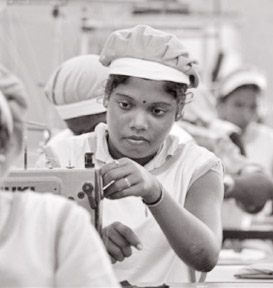Promotional prospects low for women
Can economics explain the divorce rates among married couples?
Normally that is something that would be left to the techniques of
psychology and anthropology.
 But surprisingly Gary Becker won the Nobel Prize in Economics in
1992, and one of his most celebrated papers was precisely in explaining
divorce. What enables economists to venture into such unlikely terrain?
It is the legitimising power of their tools of trade: and in this case,
it was the legitimising power of carefully examined data. Scrutinising
data for hidden stories is an important pastime of Economists. But surprisingly Gary Becker won the Nobel Prize in Economics in
1992, and one of his most celebrated papers was precisely in explaining
divorce. What enables economists to venture into such unlikely terrain?
It is the legitimising power of their tools of trade: and in this case,
it was the legitimising power of carefully examined data. Scrutinising
data for hidden stories is an important pastime of Economists.
Scrutinising some of the employment data in Sri Lanka, in the public
and private sectors also seems to reveal a hidden story: this time it is
not about divorce, but about discrimination.
Are women discriminated in employment?
On this question the data is somewhat worrying, and begs a question:
is there a hidden story of gender discrimination? Women constitute half
the population in Sri Lanka but only 34 percent of the labour force.
Women are also less likely to be employed than men.
 Unemployment among women is more than twice as high as unemployment
among men. Unemployment among women is more than twice as high as unemployment
among men.
When looking at total employment in the economy, men account for 67%
and women for 33%: a ratio of two to one in favour of men.
That itself is not conclusive on the state of discrimination. Women
are likely to be opting disproportionately to work as home-makers but
statisticians don't categorise that as employment; and the related
preferences could perhaps explain why women may be finding it harder to
be employed.
The worrying part comes when we examine the representation of women
in top rungs of organisations, where they are already employed.
Women in the public sector
Verité Research tediously gathered data on the gender and ethnicity
of the top rungs of the public sector in 2012, and the other data
referred to in this article comes from published sources and Central
Bank reports.
The employment ratio of two to one in favour of men increases
dramatically in the top two tiers of the public sector. In Tier one (the
top tier) of the public sector it becomes six to one. In Tier two
(second highest tier) of the public sector it is still six to one.
Adjusting for the fact that employment ratios are two to one in
favour of men, here is another way to make sense of this data: Men in
the public sector are three times as likely to climb to the top as women
in the public sector. That is a serious disparity in promotional
prospects and such large disparities do beg the question of
discrimination.
Women in the private sector
But the very top of the private sector does significantly worse than
the public sector. Looking only at the top 100 private companies (by
revenue) and just focusing on the position of CEO, it turns out that
only 5% of them are women.
That is, given the two to one starting disparity in employment, a man
in the top 100 companies is about 10 times more likely to end up as its
CEO as is a woman.
It is not possible to dismiss the large disparities as statistical
noise. The data requires an explanation, and the possibility of gender
based discrimination needs serious scrutiny.
Verité Research provides strategic analysis and advice for
governments and the private sector in Asia. |


